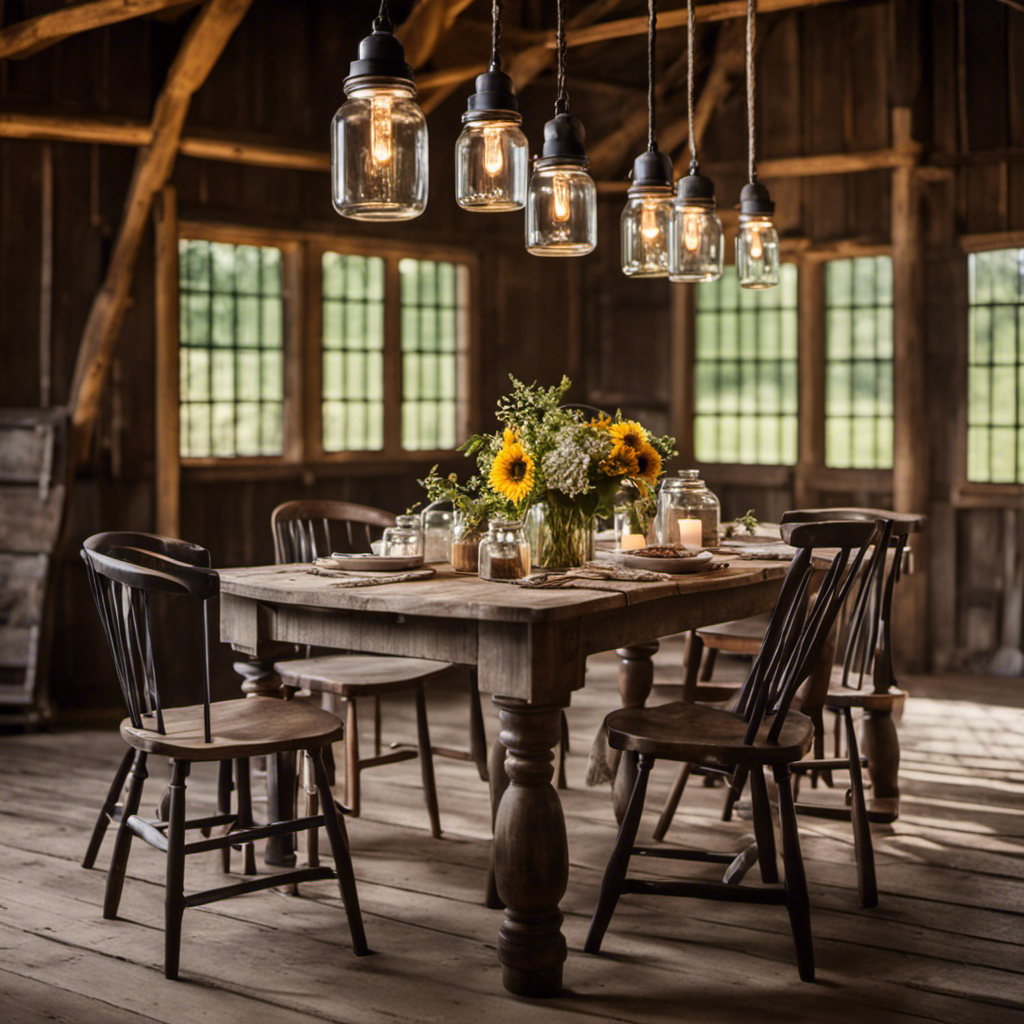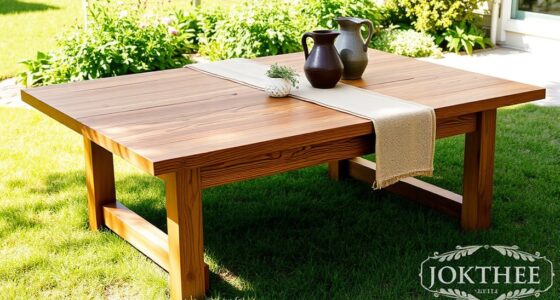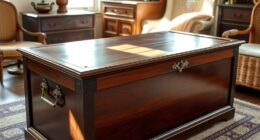Windsor chairs are classic furniture pieces with rich history, originating in England in the early 18th century and spreading to America. They come in various styles like Queen Anne and Primitive, each reflecting regional influences, craftsmanship techniques, and cultural values. These chairs feature turned legs, spindles, and saddle-shaped seats, showcasing precise woodworking skills like steam bending and carving. Caring for your Windsor involves gentle cleaning and regular maintenance. To explore the different types, their historical roots, and how to keep them in top shape, keep exploring further.
Key Takeaways
- Windsor chairs are handcrafted furniture featuring turned legs, spindles, and saddle-shaped seats, reflecting regional craftsmanship traditions.
- Originating in 18th-century England, they evolved into American styles like Queen Anne and Primitive, influenced by local materials and culture.
- Proper care includes regular dusting, gentle cleaning, and avoiding excessive moisture to preserve their wood and craftsmanship.
- Variations in Windsor chairs highlight regional and cultural differences, emphasizing practicality, elegance, or simplicity based on local needs.
- These chairs symbolize historical craftsmanship, cultural heritage, and continue to inspire appreciation and preservation of traditional woodworking techniques.

Have you ever wondered what makes Windsor chairs so timeless and popular? The answer lies in their remarkable craftsmanship techniques and the rich cultural influences that shape their design. These chairs have endured for centuries because they blend practicality with artistry, created through skills passed down through generations. When you examine a Windsor chair, you notice how the craftsmanship techniques contribute to its durability and graceful form. The turned legs, spindles, and saddle-shaped seats all showcase precise woodworking skills that require patience and expertise. The techniques involve steam bending, carving, and turning wood on a lathe, which results in sturdy, lightweight furniture that can withstand daily use. These methods have been refined over centuries, often reflecting the regional styles and available materials, making each piece unique and culturally significant. The regional styles of Windsor chairs often incorporated local customs and preferences, further enriching their cultural significance. Cultural influences play an essential role in shaping the Windsor chair’s distinctive aesthetic. Originating in England in the early 18th century, the design quickly spread to America, where it adapted to local tastes and resources. You’ll find that the variations in styles—such as the Queen Anne or the Primitive Windsor—reflect different cultural priorities, from elegance to simplicity. In England, the craftsmanship often emphasized intricate details and fine finishes, influenced by European furniture traditions. Meanwhile, American versions tended to prioritize functionality and affordability, influenced by colonial practicality. These cultural influences also extended to the materials used; depending on the region, Windsor chairs might feature oak, maple, or elm, each adding a different character and strength. The diversity in design highlights how cultural exchanges and local resources shaped the evolution of Windsor chairs into versatile, culturally rich pieces. Beyond their aesthetic appeal, Windsor chairs embody a sense of community and tradition. The techniques used to craft them often involve communal efforts, like apprenticeships and workshops, fostering a shared craftsmanship heritage. This communal aspect, combined with the influence of various cultural styles, makes each Windsor chair a reflection of its history and origin. When you own or admire a Windsor chair, you’re appreciating a piece of history rooted in skilled craftsmanship and cultural exchange. It’s no wonder these chairs have maintained their popularity for centuries—they’re not just functional furniture but also tangible links to the past, crafted with techniques and influences that continue to inspire. Whether passed down through generations or newly made, Windsor chairs remain a tribute to the enduring power of craftsmanship and cultural expression.
Frequently Asked Questions
What Are the Best Cleaning Products for Windsor Chairs?
For cleaning Windsor chairs, stick to gentle cleaning techniques using mild soap and water. Product recommendations include a soft cloth or sponge, and a small amount of dish soap. Avoid harsh chemicals that can damage the wood finish. After cleaning, dry the chair thoroughly to prevent moisture damage. Regular dusting and occasional cleaning with these gentle products will keep your Windsor chairs looking beautiful and well-maintained over time.
How Can I Identify Authentic Antique Windsor Chairs?
You can spot authentic antique Windsor chairs by examining their craftsmanship and materials. Look for signs of age, like a rich patina and hand-cut joints, which reveal traditional restoration techniques. Material authenticity is key—genuine antique chairs often use solid wood like oak or maple, not modern composites. Gently inspect for tool marks and subtle irregularities, indicating they were crafted by skilled hands. Trust your eye and a bit of patience to find true vintage charm.
Are Windsor Chairs Suitable for Outdoor Use?
Windsor chairs aren’t ideal for outdoor use because they lack outdoor durability and weather resistance. Exposure to rain, sun, and humidity can cause wood to crack, warp, or rot over time. If you want to keep your Windsor chair outside, you should treat it with outdoor-grade sealants and bring it inside during harsh weather. However, for long-lasting outdoor furniture, consider materials specifically designed for outdoor durability.
What Are Common Repairs Needed for Windsor Chairs?
You’ll often need to perform restoration techniques like re-gluing loose joints, replacing broken spindles, or tightening wobbly legs. Common damage types include cracks, splits, and loose or missing parts. To fix these issues, you typically disassemble damaged areas, apply wood glue or epoxy, clamp everything securely, and sometimes replace damaged components with matching wood. Regular maintenance helps prevent more extensive repairs and keeps your Windsor chair sturdy and beautiful.
How Do Windsor Chairs Compare to Other Traditional Wooden Chairs?
Windsor chairs stand out like a finely tailored suit among casual wear, showcasing craftsmanship differences and aesthetic variations that reflect their rich history. Compared to other traditional wooden chairs, they often feature a more elegant, spindle-backed design and a lightweight feel. You’ll notice their craftsmanship emphasizes sturdy joinery and intricate details, giving them a timeless charm that many other chairs lack. They’re a perfect blend of function and art in furniture.
Conclusion
Now that you know the rich history and variety of Windsor chairs, it’s clear they’re more than just furniture—they’re timeless stories carved in wood. With proper care, these pieces can last generations, like echoes of the past whispering through your home. So, embrace their charm and let them be a tribute to craftsmanship and tradition. After all, isn’t it wonderful how a simple chair can hold centuries of history, waiting for you to sit and listen?









